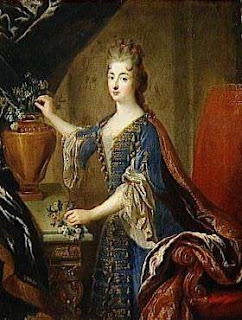
We had the extraordinary treat last weekend of visiting
Nantes, southwest of us, just up the Loire River from the Atlantic ocean. We were there as the support/babysitting team while our daughter Emily and her theater troupe performed their Cabaret
Decay Unlimited.
Nantes is a beautiful, lively city with elegant old buildings, a fabulous open air market (of which more next time), a castle, and vibrant cultural life. But the single thing which makes Nantes the most special in my mind is the Sultan's Elephant and
Machines of the Island (les machines de l'île).
In Nantes, as in Paris, between the right and left bank of the river is a large island which houses the workshop, museum and ultimately a park (still under construction) of the artist
François Delaroziere, famous throughout Europe for his incredible moving sculptures and gigantic puppets.
The 50 ton, 35 foot high elephant, is made of wood, iron and leather and is operated by 22 people. He moves realistically as all Delaroziere's creatures do. He appeared on the streets of London a few years ago without any prior publicity. This is one of the favorite methods the artist uses to introduce his characters. They are a surprise and they gather unsuspecting, amazed crowds around them as they appear as if from nowhere. It adds to the magic that surrounds the work of this unique artist.

While visiting the elephant, who now lives next to the workshop and museum, we were able to see him come alive. He raised his trunk, opened his mouth, bellowed and shook his ears from side to side. His eyes opened and closed. He did not, however, take a stroll or blow water from his large trunk.


To see all the elephant is capable of,
click here.
Inside the museum is a scale model of the elephants skeletal structure.

The museum houses several other creatures from Delaroziere's workshop. He begins each project with a detailed mechanical drawing and then builds his creations, with a large team of craft's people, from the most ordinary of materials: billows, fans, pulleys, wire, leather, metal and beautifully carved wooden pieces. He points to Leonardo da Vinci, Gustave Eiffel and Jules Verne as his major influences. Certainly his creatures are a perfect blend of those three geniuses!


All of the creatures move and visitors can ride the machines and interact with the creations.




He works very hard to make the movements and articulation of his creations move in realistic ways.


The sea monster was seen to emerge from the Loire river in Nantes one morning and float away. He now lives in the museum.

The enormous workshop is also open to view. There is always some new and mysterious project being planned and constructed.

The
little girl giant is one of the most astonishing of Delaroziere's creations. She lives out of sight, but appears in one European capital or the other from time to time, usually unannounced. Over 2,500,000 have viewed this YouTube video.
The
princess is a recent project which appeared on the streets of Liverpool last year.
Francois Delaroziere also has a
Music Project which he talks about in this interview.
 One of the few regions in France that we had never visited was the Alpes. Early last week we took off to see the high mountains of the Haute Savoie. We stayed at a little auberge called Le Chalet des Troncs in the Grand Bornand set among the Aravis mountain range, about half way between the beautiful city of Anncey and Mont Blanc, the highest mountain peak in Europe.
One of the few regions in France that we had never visited was the Alpes. Early last week we took off to see the high mountains of the Haute Savoie. We stayed at a little auberge called Le Chalet des Troncs in the Grand Bornand set among the Aravis mountain range, about half way between the beautiful city of Anncey and Mont Blanc, the highest mountain peak in Europe.
 Our first stunning view of the Alpes was from the Grand Bornand.
Our first stunning view of the Alpes was from the Grand Bornand.
 Our chalet was outside of town, very cozy and rustic.
Our chalet was outside of town, very cozy and rustic.
 We visited Anncey, the capital of the Haute Savoie, with it's large lake and charming historic town.
We visited Anncey, the capital of the Haute Savoie, with it's large lake and charming historic town.



 Our second goal was to visit Chamonix and to catch a view of the glaciers and Mont Blanc itself (15,781 ft). The drive was spectacular and we enjoyed watching several brave souls ski off the highest peaks, open parachutes and with skis still attached, float across the valley and land outside town.
Our second goal was to visit Chamonix and to catch a view of the glaciers and Mont Blanc itself (15,781 ft). The drive was spectacular and we enjoyed watching several brave souls ski off the highest peaks, open parachutes and with skis still attached, float across the valley and land outside town.



 We arrived back home on Friday to find that our litle town, (elevation 740 ft), looked just like the Alpes!
We arrived back home on Friday to find that our litle town, (elevation 740 ft), looked just like the Alpes!










































